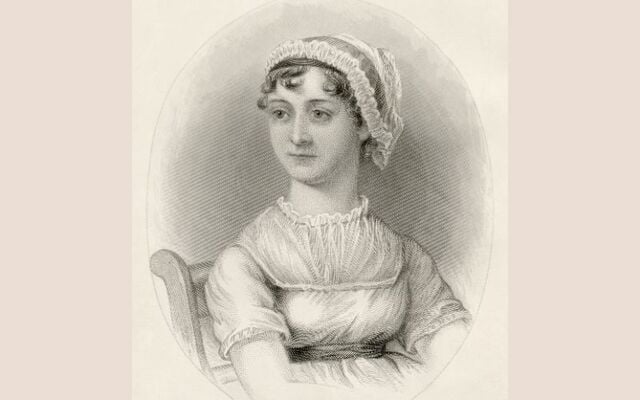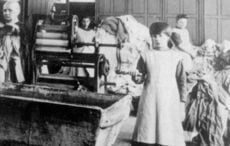Famous for her witty observations of provincial English gentry society, famous author, Jane Austen undoubtedly looked to friends, family, neighbours and visitors for inspiration. The question remains how much of her personal life, wishes and dreams she brought into her work.
One young Irish man’s influence on Austen’s "Pride and Prejudice" has been the object of much speculation. How much of Irishman Thomas Lefroy’s character is seen in Mr. Darcy, or indeed Wickham?
Tom Lefroy
The Lefroy family were friends with the Austens through a member of the family who served as vicar of Ashe, about two miles from the Austen home at Steventon. The vicar’s wife, one of Jane Austen’s greatest friends, occasionally had her husband’s Irish relations to stay. One of whom was Tom.
Tom, one of eleven children of Anthony-Peter Lefroy (1740-1819) and Anne Gardiner, was born in Limerick in 1776, where his father served in the army. He was educated in Trinity College and an entry can be found for him in Findmypast’s Alumni Dublinenses. The entry shows that he entered college at the age of 14 and was a Pensioner (all fees were paid, in this case by an uncle). He earned his BA in the Spring of 1795. He visited Ashe in December of that year.
The stir he caused was probably owing to his being a new face at the local balls which were otherwise populated by old friends and familiar faces.
Evidence for Austen’s relationship with Lefroy comes from her own letters. Just three letters mentioning Tom survive. Many of Austen’s more personal letters were destroyed by her sister Cassandra.
If we did not know of Lefroy’s later success the descriptions of Tom in these letters are closer to the dashing, slightly improper and ultimately reckless Wickham than they are of the sober (& wealthy) Darcy.
In the first letter, dating to January 1796, she tells her sister, “I am almost afraid to tell you how my Irish friend and I behaved”.
Tom was being teased by family members about Jane.
Their behaviour, noted by all around them, was closer to the characters of Wickham and Lizzie’s in their youthful exuberance and gossipy conversations than the more measured Mr Darcy. During his short stay at his uncle’s house, the two had shown a marked preference for each other’s company and shared their mutual love of literature. In this case rather racy literature: Fielding’s "Tom Jones".
Their flirtation was short-lived. Jane wrote to her sister in dramatic tones on January 15th, “the Day is come on which I am to flirt my last with Tom Lefroy… My tears flow as I write, at the melancholy idea”.
Tom returned to Ireland and was called to the bar the following year, 1797. Jane’s only token to remember him by was a portrait of him by a mutual friend. And she did remember him, mentioning him again nearly three years later in another letter to her sister, disappointed that she could not extract news of him from his aunt.
Austen’s biographer speculates that the couple was deliberately kept apart. Both were relatively impoverished and would need to make their way in the world in the ways prescribed for their respective stations and genders. Tom would be expected to have a good career and Jane to make a good match.
As it happened, both of their careers flourished. Jane became a famous author while in Ireland, Tom rose through the ranks of the legal profession. He practiced law from Kildare Street, became a judge and went on to become Lord Chief Justice of Ireland.
They never met again. Tom married in 1799 and had nine children. His wife, Mary Paul, came into an inheritance, which improved the family fortunes. Throughout his life he maintained an interest in Jane’s literary career and visited the family after her death to pay his respects. A nephew reported that he admitted to his love for Jane, although he called it a "boyish love". He died aged 93 in 1869.
Read more
* Originally published June 2015, updated in March 2025.




Comments